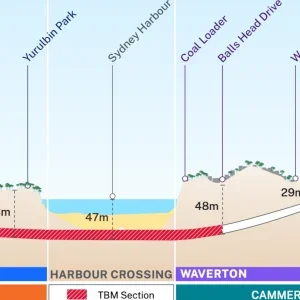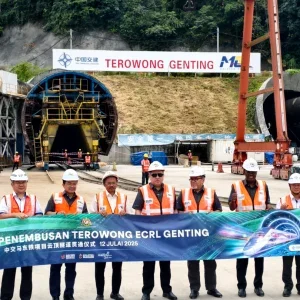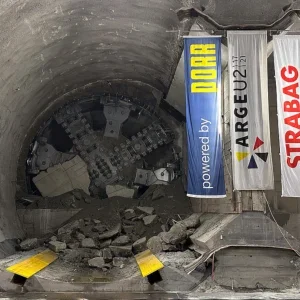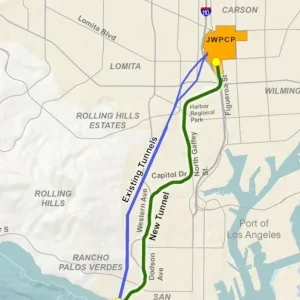London is a city under attack, with its most hidden places thrust into the frontline of the 21st century’s “War On Terror”.
On the morning of Thursday 7 July a series of four terrorist blasts in London ripped through the UK capital, killing more than 50 people, injuring hundreds of others and bringing the city’s public transport network to a standstill. At the height of the morning rush hour at 08:50hrs, three devices were exploded in a co-ordinated attack on the London Underground system, with a fourth on an iconic London red double-decker bus an hour later.
The first blast was reported at 08:51hrs on a Circle Line underground train just outside Liverpool Street station. A second blast took place on a Piccadilly Line train heading from Russell Square to King’s Cross. A third blast targeted another Circle Line train as it left Edgware Road station, three other trains were in the vicinity of Edgware Road when the blast occurred. All three bombs exploded within 50 seconds of each other.
Early reports described flashes and initially attributed the incidents to power surges, but it soon became clear that the explosions were part of a deliberate plan. As commuters and tourists began pouring out of the affected stations under a pall of smoke, many covered in blood, a fourth explosion blew the top storey off a double-decker bus at 09:47hrs in Tavistock Square/ Upper Woburn Place.
The London Underground network was evacuated, with all trains cancelled until a limited service began running on 8 July. Buses were also suspended by public transport chiefs in the city as part of their emergency plan to protect against further incidents. The buses later resumed service in a limited capacity at the end of the day on 7 July as thousands of commuters began what was described as the long trudge home in the absence of their usual mode of transport.
By the morning of 8 July, rescue services said that more bodies were yet to be extricated from the wreckage of the King’s Cross blast. In addition, processing of each of the scenes for evidence was underway, together with a huge intelligence gathering and investigative effort. Within days police were raiding properties in Leeds and although the perpetrators of the 7 July attacks are believed to have perished during the explosions, police were talking of terrorist cells linked to Islamic militant cults operating in the UK.
As London and the rest of the UK braced itself for further attacks, they did not have long to wait. On 21 July, exactly two weeks after the first, a second attack took place, again on three London Underground trains and a double-decker bus. At 12:26hrs a blast occurred on a Hammersmith and City train at Shepherd’s Bush. Minutes later at 12:30hrs, the second blast took place on a train at Oval station on the Northern Line. The third underground blast occurred at 12:45hrs on a Victoria Line train at Warren Street. The bus blast was at 13:30hrs on Hackney Road in east London.
The devices did not initiate fully and only the detonators ignited, although there was widespread disruption to the capital’s transport network. Only one injury was reported with this attack and the terrorists carrying the devices were all apprehended in an international operation by the end of the month.
Scrutiny of the scenes for evidence has been the priority after the rescue operations were concluded. T&TI contacted Tube Lines, who are responsible for the underground infrastructure on the Piccadilly Line. A spokeswoman confirmed that the scene of the King’s Cross – Russell Square blast, a 3.66m diameter tunnel, 30m below the surface lined with bolted cast iron segments, had been preliminarily inspected by their engineers to ensure rescue and investigatory operations were safe to proceed. She said: “The inspection was obviously hampered by the train still beng in place, but our observations concluded that there was little or no damage to the tunnel structure.”
After the police released the scene, Tube Lines’ in-house tunnel experts carried out a detailed visual inspection of the 200m length of tunnel that could have been affected by the blast, with particular reference to a 30m stretch at the site of the explosion, plus an adjacent crossover tunnel. This confirmed the initial assessment that the tunnel, originally excavated in 1906 through Upper Mottled Clay, part of the Lambeth beds, was not damaged and “no leaks resulted from the force of the explosion”.
A London Underground spokesman told T&TI there had been “no tunnel collapse as wrongly stated in some reports” at any of the blast locations, but would not be drawn to comment on damage to tunnel services or linings. Tube Lines returned the Piccadilly Line to service by 4 August following repairs to cabling and signals.
Metronet is responsible for the London Underground infrastructure on the Circle Line. By 25 July, the group announced that the Aldgate station was re-instated. Although the train in which the bomb was initiated was damaged, a full assessment revealed that the only major damage was to the cables used for signalling, power and communications. The tunnel itself, dating from early in the 20th century, “was undamaged”. By 29 July, Metronet had also reinstated Edgware Road station. The situation was similar to Aldgate, with damage limited mainly to cables. Ultrasonic inspections confirmed the rails were undamaged.
BTS comment on attacks
T&TI approached Dave Court, chairman of the British Tunnelling Society, for its perspective on the London terrorist attacks:
“The British Tunnelling Society joins with the civilized world in condemning terrorist acts such as these which indiscriminately target innocent people of all religions, creeds and cultures.
From reports in the media it appears that the bombs were targeted on destroying human life, rather than infrastructure, initial reports seem to indicate that there has been no serious structural damage to the tunnels affected by these blasts however this will not be proved until all debris has been cleared and final inspections undertaken.
Tunnels are not generally designed to cater for bombs and the tunnels in question were certainly not, however circular tunnels are fairly resilient structures and are able to withstand a range of transient loads as well as the earth pressure around them.
It is too early to speculate what measures, if any could be done to limit the susceptibility of the tube system to attacks but it is clear that the main thrust must concentrate on ways to keep explosives and the terrorists who carry them out of the tube system rather than to consider redesign of tunnels, such redesign being only possible for new tube lines.
It is perhaps finally comforting to note that the existing tunnels as designed have withstood the test and this is a credit to the tunnel designers and the contractors who built them many years ago.”
Transport for London
From 4 August, London Underground (LUL) confirmed that services would be restored along the entire length of the Piccadilly line. Tim O’Toole, LUL managing director, said: “I would like to pay tribute to the work of the staff from London Underground, Metronet and Tube Lines who have done an incredible job in the past few weeks. Not only did they perform magnificently on July 7 and 21, but they have enabled the Tube and London to get back to normal within four weeks. However, at this time, we also remember those who were killed or injured on 7 July. Our thoughts are with the families of the bereaved and with those still recovering. We will never forget them.”
Tube Lines
Terry Morgan, chief executive of Tube Lines said: “Restoring a full service for Londoners has been our priority and our specially formed rebuild and recovery team has worked tirelessly to achieve this. Close co-operation between the emergency services, London Underground and our staff has ensured the fastest possible end to disruption.” He added, “normality is returning, but our thoughts remain with the families of the bomb victims, for whom normality will never return.”







